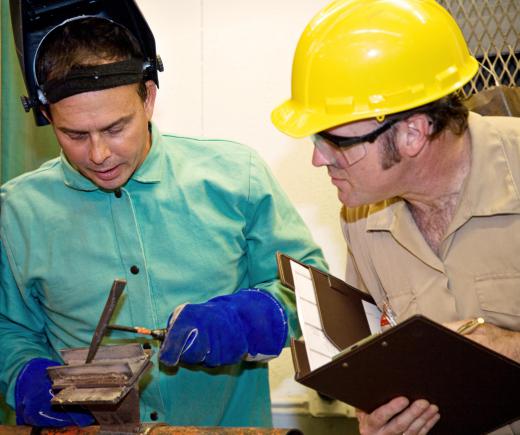On the 16th day of each month, the Governor's Board of the United States Federal Reserve releases two economic indicators, the industrial production index (IPI) and the capacity utilization. The industrial production index indicates the monthly production of raw goods by businesses such as utility companies, mines, factories, newspaper and magazine publishers, and book publishers. An industrial production index is calculated using a Fischer formula and compared to the reference year, currently 2002 with a reference level of 100. The Bureau of Labor Statistics and the unions provide estimates of the raw materials used in production and the goods produced within a given time. Knowledge of the IPI trends allows investors to predict the future economy and gross domestic product, gauge inflation, and measure growth within an individual industry sector.
The industrial production index can be used to calculate capacity utilization ratios. Capacity utilization refers to the extent to which current production in a particular industrial sector approaches its productive potential. This indicator implies the efficiency of production in the economy. Both the industrial production index and the capacity utilization move in a procyclic fashion with the health of the economy, rising with a burgeoning economy and falling with a sickly economy. Furthermore, both indicators reflect the coincident economy, revealing the current short-term status of economic activity.

There are strengths and weaknesses to the use of the industrial production index as an economic indicator. It is based on timely information, with the data used in the calculation current up to a few weeks before publication. Also, it allows an analysis of different industry sectors. A significant drawback to the IPI as an economic indicator is that it does not include service and construction sectors, which make up more than 50 percent of the economy. In addition, the capacity utilization numbers are derived from a variety of sources, some of which may not be verifiable.

The industrial production index is monitored closely by the Federal Reserve. This indicator is a harbinger for upcoming inflation when it begins to fall. Increases in the IPI coupled with increases in the capacity utilization typically occur when raw materials become scarce, prompting a rise in their prices. As manufacturing costs soar, prices for finished goods will rise, in turn. When the capacity utilization rises above 82 percent, a sign of strong demand and inadequate supply, inflation occurs.

Stock and bond markets also respond to these indicators. A modest industrial production index combined with a capacity utilization level below 80 indicates an economic slow-down, prompting concerns about rising unemployment and recession. An IPI that is higher than expected during an economic expansion will create fears of inflation, while an index that is higher than expected during an economic slowdown may initiate a rally. Lower numbers than expected can create a short-term increase in prices if investors have been wary of an overheating economy with risks of hyperinflation.
